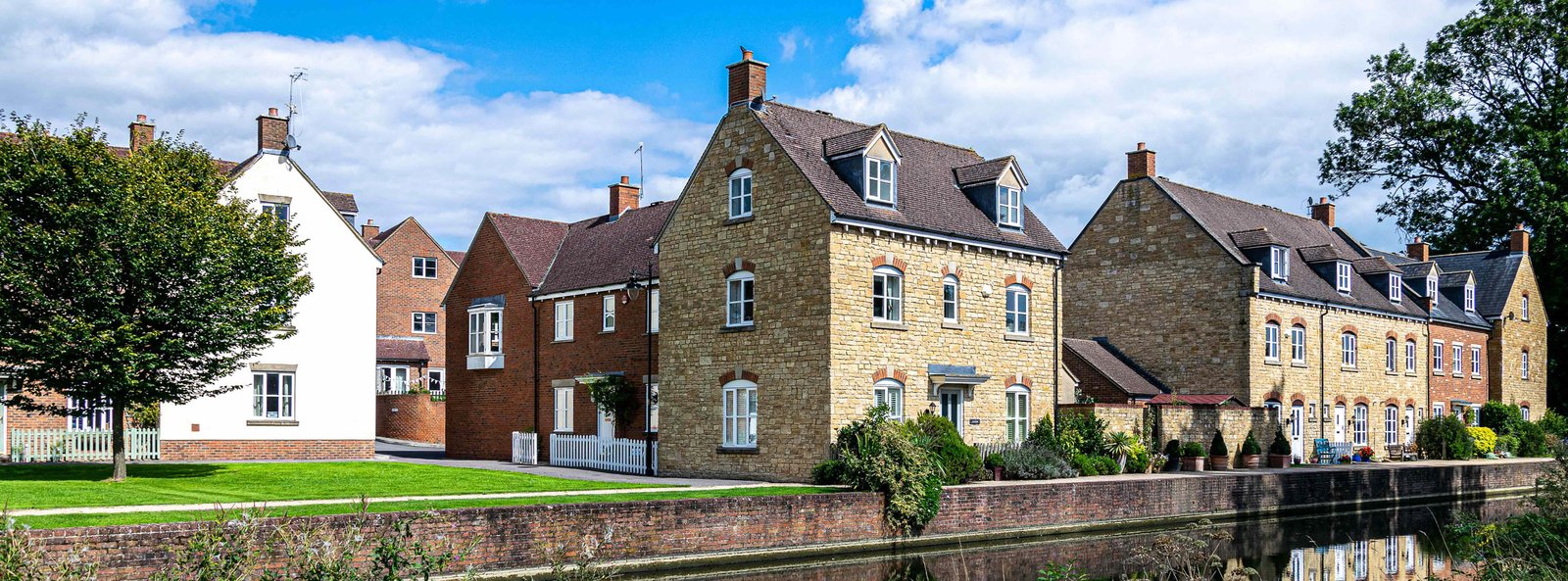If you're looking to move to a charming market town in the Cotswolds with excellent schools and plenty of green space, look no further than Stroud and its surrounding towns and villages.
If you're considering moving to Stroud, here is our guide to some areas that you may want to explore in the search for your dream home.
Property Centre Guide on Moving to Stroud, A Civil Parish Market Town in the Cotswolds
Stroud
Rated the best place to live in the UK by The Sunday Times, notable designer Jasper Conran referred to Stroud as "the Covent Garden of the Cotswolds", while The London Evening Standard once described the town as "Notting Hill with wellies".
With its independent spirit and abundance of amenities, Stroud is an ideal place to call home. Renowned for its picturesque landscape and hilly streets, Stroud serves as the primary town in the Stroud District positioned below the western escarpment of the Cotswold Hills and at the meeting point for the Five Valleys.
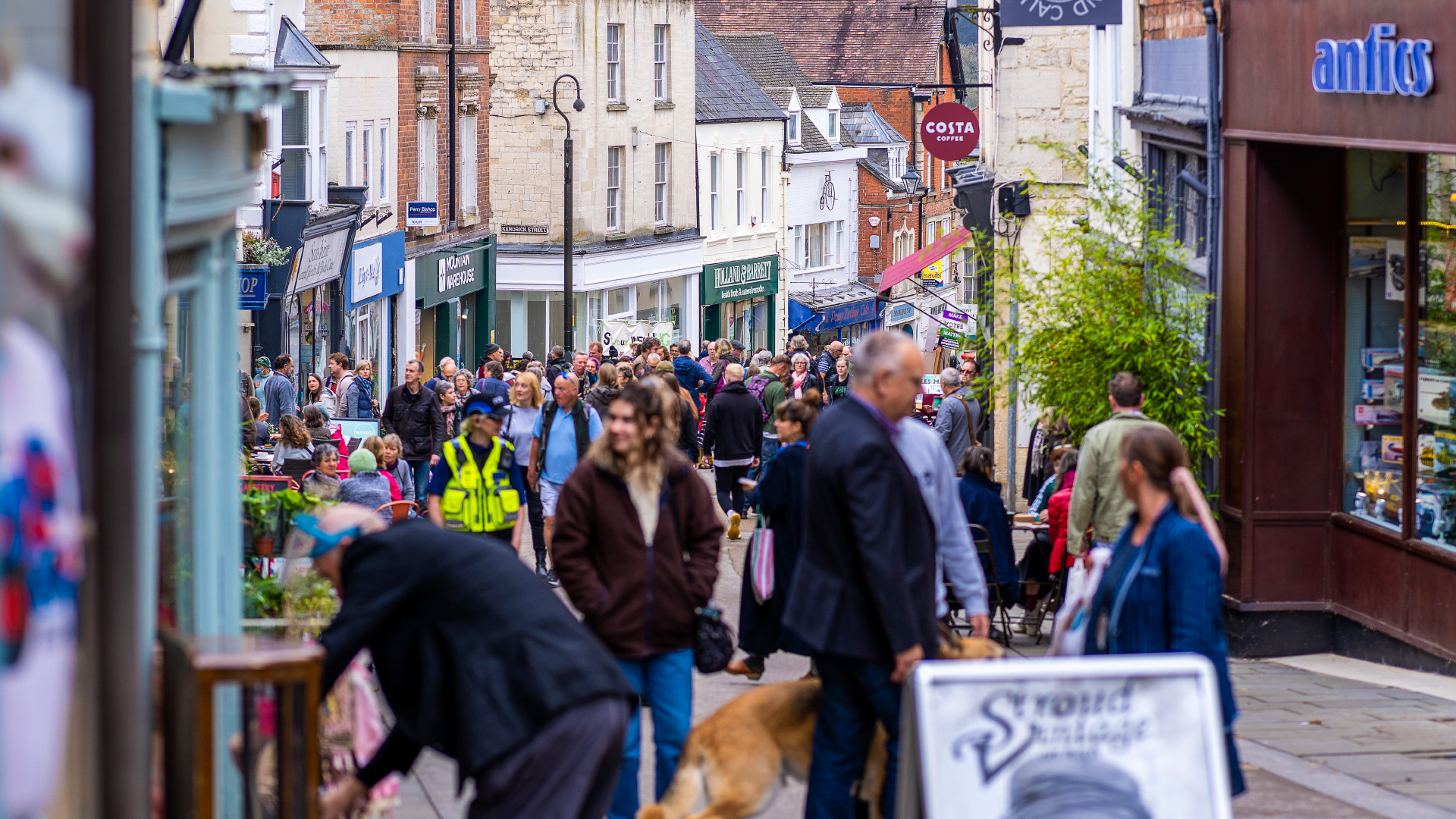 Stroud High Street. Picture: Carl Hewlett / Hewlett Photography & Design
Stroud High Street. Picture: Carl Hewlett / Hewlett Photography & Design
Stroud is a hub for many villages and market towns in the area including Amberley, Bisley, Bussage, Chalford, Dursley, Eastcombe, Eastington, King's Stanley, Leonard Stanley, Minchinhampton, Nailsworth, Oakridge, Painswick, Randwick, Selsley, Sheepscombe, Slad, Stonehouse, Brimscombe & Thrupp, Whiteshill and Woodchester.
Stroud's old centre contains many lovely cottages, townhouses and terraces made of Cotswold stone and brick. Several of these buildings have an extensive industrial history, as Stroud has long been known for its textile production.
Light engineering and small-scale manufacturing are the primary functions of the town today, though a small textile industry remains. The green baize cloth used to cover championship snooker tables as well as the felt for tennis balls at Wimbledon are both still made in Stroud today.
If you're looking for independent shops that sell a range of items, from fossils to fairies and vintage to vinyl, Stroud is the place for you. The town has become known as a great spot to uncover one-of-a-kind treasures.
In the centre of town, you'll find plenty of opportunities to shop for vintage clothing, second-hand books, antique and second-hand furniture, and vinyl records. You can also explore some great independent shops for clothing, jewellery, homeware, and gifts.
At the weekend, Stroud’s multi-award-winning Farmers’ Market creates a real buzz in the town. To recharge your batteries, you’ll find an abundance of cafes, many of them independent and as Stroud was one of the birthplaces of the organic food movement, it is home to Britain's first fully organic café.
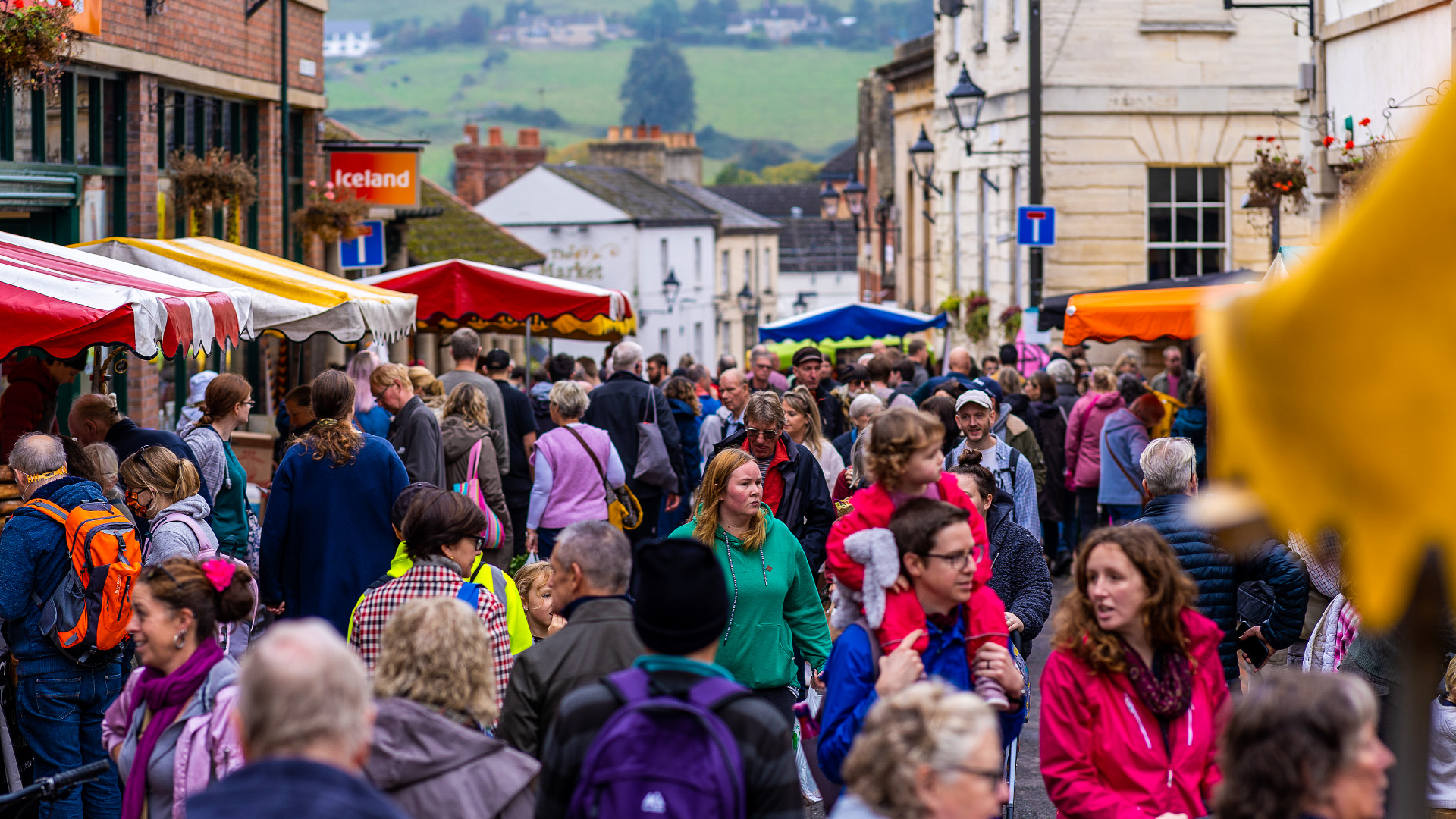 Stroud Farmers' Market. Picture: Carl Hewlett / Hewlett Photography & Design
Stroud Farmers' Market. Picture: Carl Hewlett / Hewlett Photography & Design
The artistic community of Stroud traces its origins back to the early 1900s and to this day Stroud is home to a large number of creative artists and musicians.
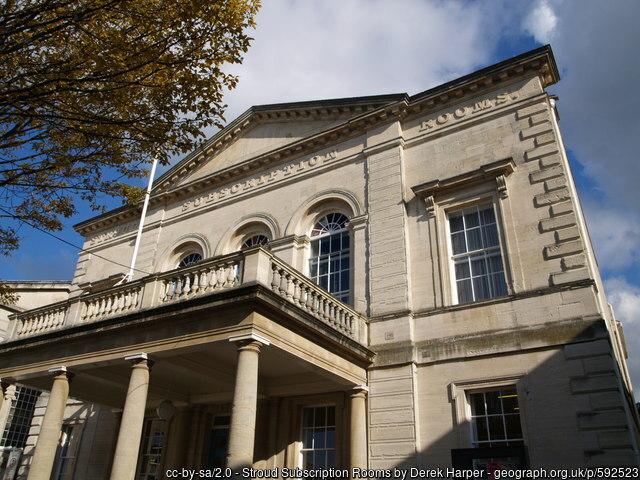
Originally built by public subscription, The Subscription Rooms sits at the centre of town both physically and culturally. It provides a unique entertainment experience with an innovative program that includes music, dance, theatre, visual arts, spoken word, exhibitions and workshops.
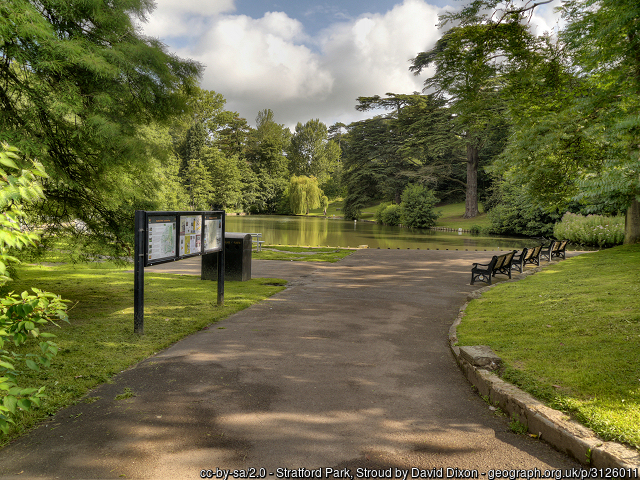
On the outskirts of town, you'll find Stratford Park where the Museum in the Park is also located. Stratford Park was originally home to a local weaver but is now a leisure centre with an indoor and outdoor pool while the Museum in the Park is dedicated to the history and culture of the Stroud valleys.
Near Stroud, there are three secondary schools: the county council-maintained comprehensive Archway School, which offers an 11-to-18 education for children living in Stroud, Rodborough and Cainscross. There are also two state-funded selective schools from which Marling School and Stroud High School trace their histories back to 1889 and 1904 respectively. These former grant-maintained and foundation schools became academies in 2011.
Bisley
Bisley, located just four miles east of Stroud, is a thriving community with plenty to offer. There are two pubs, a post office and store, a primary school, and a WI hall that hosts regular events. The Bisley Flower Show is a popular annual event and if you have visitors looking for somewhere to stay overnight, there are several B&Bs in the village.
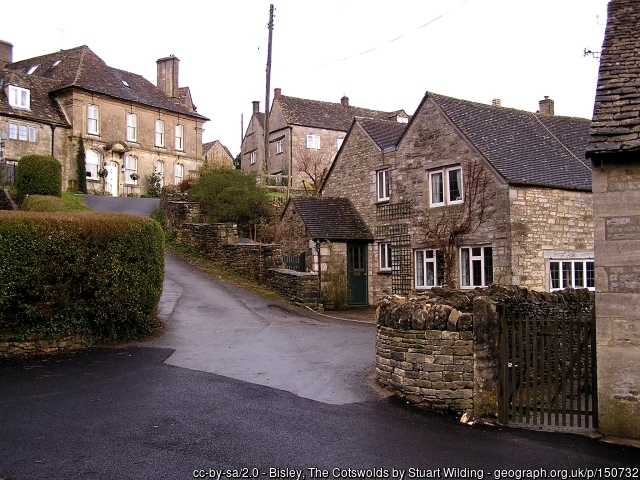
On Wells Road in Bisley, there is a structure featuring seven spouts coming from the Seven Springs. This spring is especially known for the annual Ascension Day Well Dressing.
There are many notable features in Bisley, including a wealth of Cotswold stone houses and some famous residents both past and present.
Since 1982, prolific contemporary novelist Jilly Cooper has called Bisley home. Througham Slad Manor believed to date from the mid-16th century was owned by Mike Oldfield, who installed a recording studio in the barn. The late Modernist sculptor Lynn Chadwick's former home, Lypiatt Park, and Prince and Princess Michael of Kent's old residence, Nether Lypiatt Manor, are both nearby.
Brimscombe & Thrupp
Made up of the villages of Thrupp and Brimscombe in the narrow Frome Valley slightly southeast of Stroud this parish also includes the hamlets of Quarhouse and The Heavens.
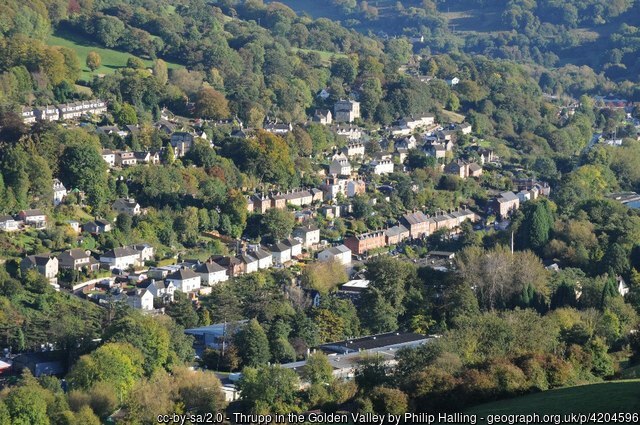
The construction of the Thames and Severn Canal and Brimscombe Port in 1789 spurred the growth of both villages as many cloth and woollen mills were built. Prior to this, small-scale textile weaving and cloth manufacturing had been taking place for centuries but on a much smaller scale.
The area surrounding the former port is being revitalized as part of a bigger project to restore canals by the Cotswold Canals Trust. The canal itself will be navigable again from Brimscombe Port to the Gloucester and Sharpness Canal. There are plans and continuous efforts underway to expand what is now known as The Cotswold Canals all the way eastward from Brimscombe to Inglesham near the River Thames.
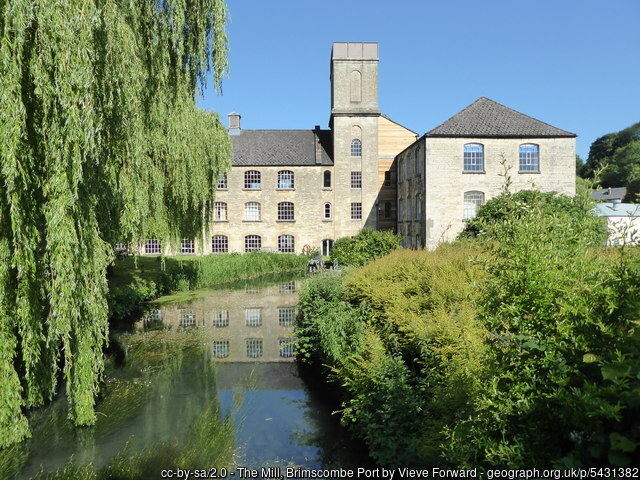
In Brimscombe, there are a few stores which include: the newsagent, post office, fish & chip shop, hairdresser and antique furniture store. The are two primary schools nearby, namely Thrupp Primary School and Brimscombe C of E Primary School.
The majority of the former mill buildings have been restored for new businesses. For example, Bourne Mills now has a cycle shop, auto repair garage, and metal polishing company. Another mill called Griffin Mill is home to small businesses like a painting and decorating retail store, fitness centre, antique emporium, computer supplier, printmaking co-operative, and art shop.
Bussage
Bussage is situated near the A419, by Brimscombe, Eastcombe and Chalford Hill, and is close to the River Frome. The village was thrust into the spotlight in the 1970s after rumours circulated that actor Paul Newman had been spotted looking for a home there.
The more recent development in Bussage, otherwise known as the Manor Farm Estate, is composed of many properties and takes its name from the original farm that occupied this area. Now a private residence, the original farmhouse is still there today. The estate isn't entirely in the parish of Bussage; the northernmost section is also located in Bisley-with-Lypiatt.
The parish church of Bussage is dedicated to St Michael & All Angels. This church was founded by Thomas Keble, after whom the nearby secondary school was renamed.
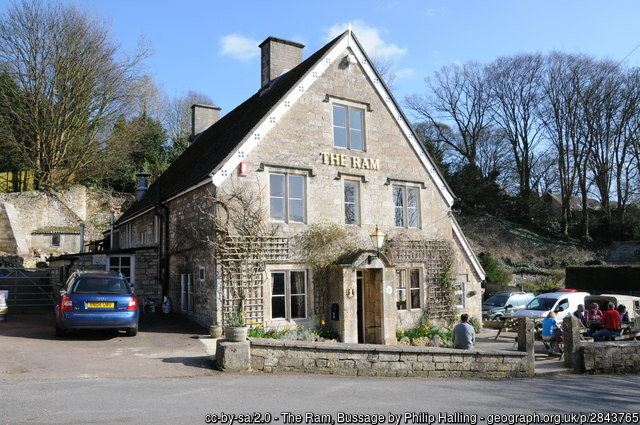
Those choosing to live in Bussage have access to many local amenities including The Ram Inn situated on The Ridge and a small shopping centre that consists of a Tesco Express, Boots pharmacy, Chinese takeaway and doctor's surgery.
Chalford
Chalford is a large village located in the Frome Valley, southeast of Stroud. It gives its name to Chalford parish, which covers the villages of Chalford, Chalford Hill, France Lynch, Bussage and Brownshill. The parish spans over two square miles of Cotswold countryside.
Located in one of the Five Valleys known as 'The Golden Valley', Chalford was home to displaced Flemish Huguenot weavers in the 17th and 18th centuries. These European refugees brought with them skills in manufacturing quality silk and woollen fabrics.
The Golden Valley is narrow and deep, so many weavers' cottages were strategically built along the hillsides. This gave the area an Alpine atmosphere, which is why it's often still referred to as the 'Alpine Village'. Narrow hillside paths rendered donkeys the primary mode of transporting groceries and other goods to residences as recently as the 1950s.
Many properties in the Stroud district, including those in Chalford, are made from Cotswold stone. The local fields are bordered by dry stone walling and the village itself has been designated a conservation area.
Eastington
Eastington is a village that lies four miles west of Stroud at the entrance to the Stroud Valley. It is situated west of Stonehouse and for commuters, offers easy access to Junction 13 of the M5, A38, and A419.
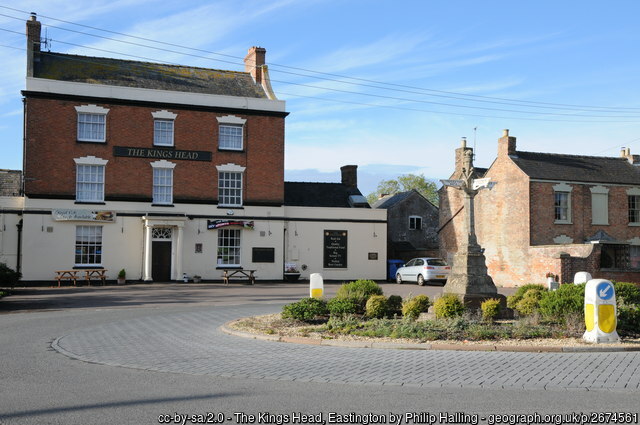
Although Eastington is a small town, there are several amenities including a Co-op, butcher, two pubs, hairdressers, and garage. Additionally, there is a primary school and community building that hosts the Eastington playgroup and various clubs.
The nature reserve of Five Acre Grove lies close to the village and is designated a Key Wildlife Site.
King's Stanley
King's Stanley is a picturesque village situated beneath Selsley Common and Stanley Woods, with gorgeous views of the nearby area, particularly from Marling Close recreation field.
Located three miles from the M5, off the A419 Ebley bypass between Stonehouse and Stroud there are several local shops, including a Co-op with an attached Post Office and an award-winning butcher that also sells fresh vegetables. The centre of the village features several registered Village Greens, making it a pleasant place to visit.
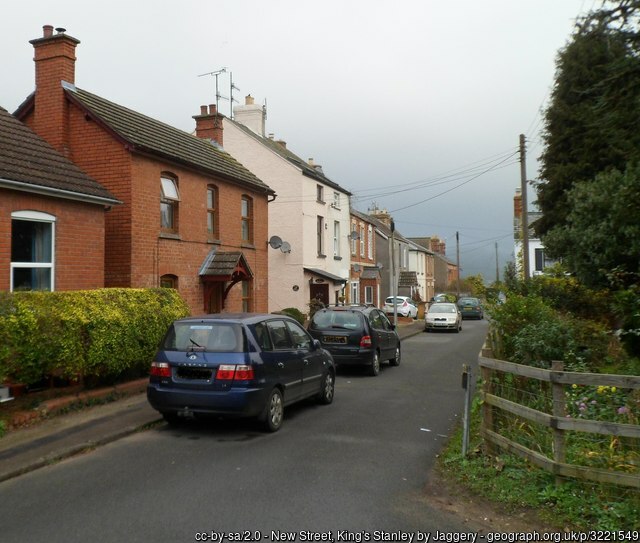
The original low-level route of The Cotswold Way passes through the village, with the higher path running over Selsley Common. As you travel along it, you'll come across Stanley Mill - a Grade I listed building notable for its unusual shape that was built as the first 'fire-proof' mill in the country.
All Saints, a church renowned for its spectacular 1862 glass windows designed by William Morris of the Pre-Raphaelite movement, is located in nearby Selsley. Occasional tours allow visitors to admire both the interior and exterior of this beautiful Bodley-designed structure.
Leonard Stanley
Leonard Stanley, a village made up of some 600 houses is located 3.5 miles southwest of Stroud. Situated beneath the Cotswold escarpment overlooking the Severn Vale, the surrounding land is mainly given over to agricultural use.
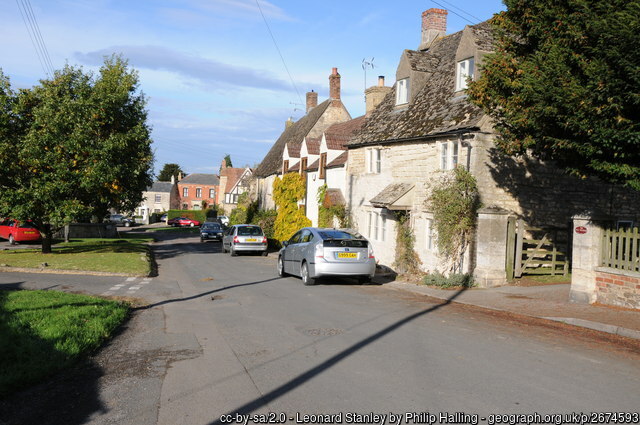
Originally a small Saxon village, Leonard Stanley grew into a bustling centre for weaving and agriculture. The village had inns, a marketplace, and two annual fairs. While agriculture continues in the area, in recent years the village has become more of a purely residential community for nearby towns such as Stonehouse and Stroud.
Minchinhampton
Minchinhampton is an ancient Cotswolds market town located on a hilltop, surrounded by common land four miles southeast of Stroud. The views from the common are far and wide taking in both the Severn Estuary and Wales.
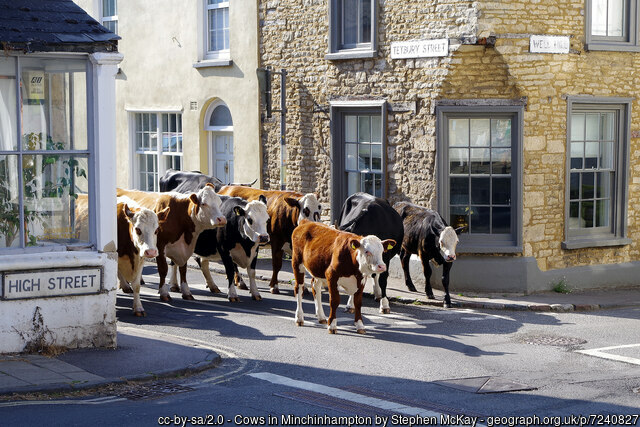
The main square in Minchinhampton, complete with a war memorial and 17th-century Market House given to the town in 1919, holds a market on the first Saturday of each month. In addition to Henry's Dairy, The Kitchen coffee shop, and Boots pharmacy dotting the small high street, there is also a post office and other amenities.
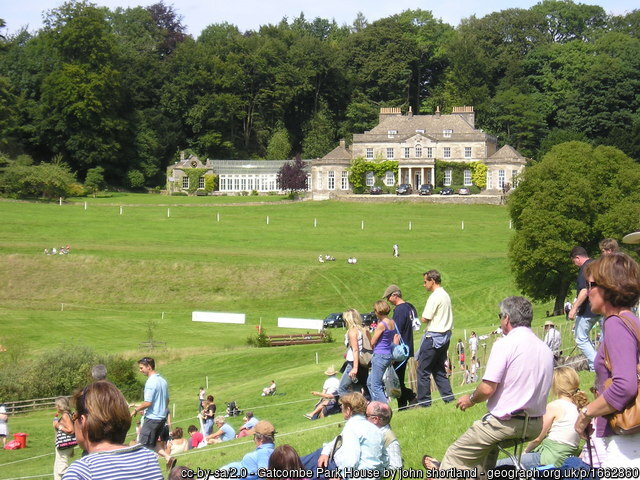
Minchinhampton is a great place to visit all year round. Gatcombe Park, the home of HRH The Princess Royal and her family, is located nearby. Each year in late summer, Gatcombe Park hosts the Festival of British Eventing. There is also a twice-yearly craft fair and an annual summer visit by Gifford's Circus. Minchinhampton Country Fayre is held every other year on the High Street.
Minchinhampton RFC is a very popular rugby club with three adult teams, minis and juniors. In 2014, Minchinhampton RFC's players were joined by Gatcombe Park resident Mike Tindall, the 2003 Rugby World Cup winner and ex-England and Gloucester RFC rugby international married to Zara Phillips, the daughter of Princess Anne.
 Mike Tindall at Minchinhampton Rugby Club. Picture: Carl Hewlett / Hewlett Photography & Design
Mike Tindall at Minchinhampton Rugby Club. Picture: Carl Hewlett / Hewlett Photography & Design
Minchinhampton Golf Club is a favourite among both locals and visitors, with three picturesque courses. The Cherington and Avening courses are nestled near the villages of their namesake to the southeast of the town while The Old Course lies on Minchinhampton Common itself.
Nailsworth
Nailsworth, an artistic market town located in a wooded valley east of Stroud and nestled in the south Cotswolds, is well-known for its many successful restaurants, pubs and cafes.
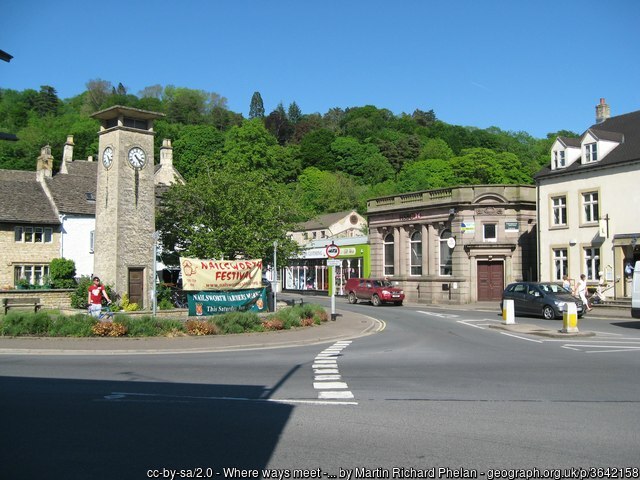
If you're looking for a good meal in Nailsworth, you won't be disappointed – there are plenty of great options to choose from. Hobbs House Bakery is especially popular since it's owned by the Fabulous Baker Brothers – Tom and Henry Herbert. William's Food Hall has also helped put Nailsworth on the map as a foodie destination, attracting celebrities and gourmands alike with its fresh seafood and locally sourced produce.
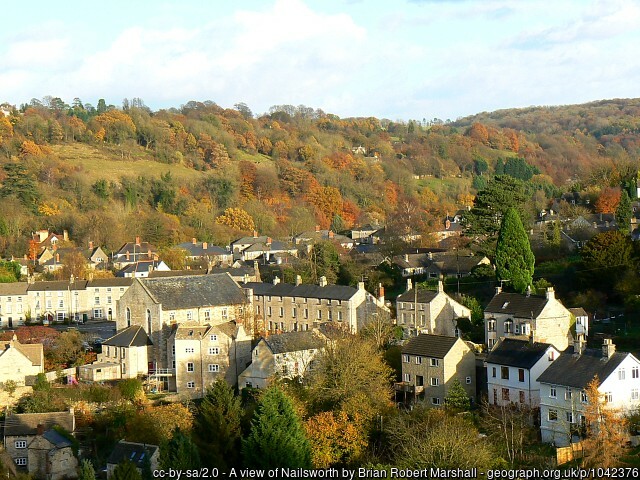
If you're looking for things to do in Nailsworth, make sure to check out the Farmers' Market on the fourth Saturday of every month. You'll find a great selection of fresh produce, homemade goods, and more. Afterwards, enjoy some shopping in Nailsworth's charming independent shops - you're sure to find something special.
The Nailsworth Festival is a great event for people of all ages. It includes art and music events, and it's held every May. Nailsworth also has the largest number of working water wheels per square mile in the country. You can follow the mill trail to see Ruskin Mill, a centre for artistic activity, or the Stroudwater Textile Trust’s Weaving Shed at Gigg Mill nearby.
Oakridge
Oakridge is a group of five hamlets located on the outskirts of Stroud, consisting of Oakridge Lynch, Far Oakridge, Waterlane, Bournes Green, and Tunley.
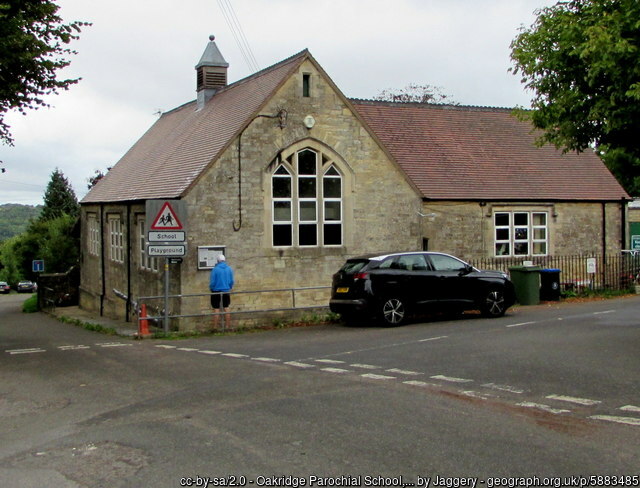
The village of Oakridge Lynch is home to St. Bartholomew's parish church, Oakridge Parochial Primary School, a village shop and post office, The Butchers Arms pub and the Village Hall.
Painswick
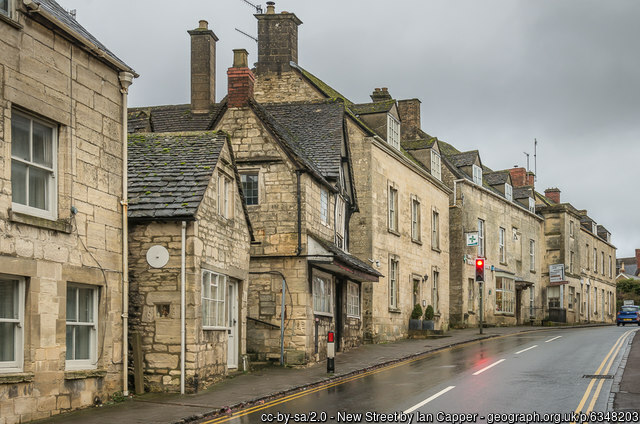
Painswick, a historic wool town well-known as ‘The Queen of the Cotswolds’, is one of the finest preserved towns in the area. It's surrounded by some of England's most picturesque countryside.
The town's winding roads are flanked by beautiful buildings. New Street is home to the oldest building in England that housed a Post Office, as well as the country's oldest bowling green and St. Marys parish church - which sits amongst 99 yew trees in one of the most picturesque churchyards in the country.
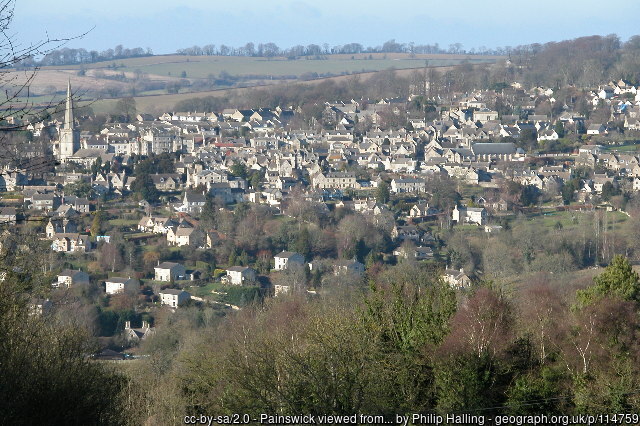
Painswick is ideally located for those who enjoy walks and hikes, as it lies in the middle of the Cotswold Way. Furthermore, there are many other lovely places nearby such as the Rococo Gardens and picturesque villages like Sheepscombe, Edge and Slad.
To experience some astounding views, take a stroll up to Painswick Beacon. On clear days, you can see as far as the Malvern Hills and the Brecon Beacons.
Randwick
The village of Randwick, just a 10-minute drive from Stroud town centre, is a charming mix of cottages connected by winding lanes known as 'laggers' by the locals.
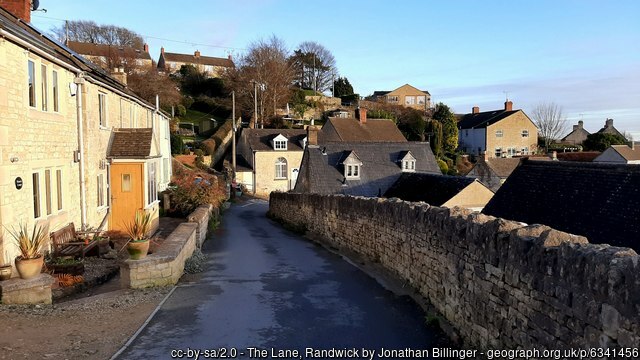
The village of Randwick is most celebrated for its yearly May festival, the Randwick Wap. This event dates back to medieval times and includes ancient pagan elements.
The procession begins with a procession of villagers in eye-catching costumes, followed by a Mop Man. He waves his wet mop back and forth, splashing onlookers as he goes, marching ahead of the rest of the group which includes a Flag Man, a Sword-bearer, cheese-bearers, Ladies-in-Waiting, Princesses, a Queen and the Mayor.
After the Mayor is dunked in the pool, the procession moves to Well Leaze, where two rounds of cheese are rolled down a slope. A day-long festival of music and public events commence after this, with stalls selling produce and crafts from the local area.
The late 19th century saw a ban on the festival because it was known for unruly behaviour; however, it made a successful comeback in 1972.
Rodborough
Rodborough is a village located south of Stroud, north of Nailsworth, and northwest of Minchinhampton. The parish consists of the settlements: Bagpath, Butterrow, Kingscourt, Lightpill and Rooksmoor. Additionally, Rodborough is adjacent to Dudbridge which falls under the Stroud suburb.
Rodborough village is located near Rodborough Common, a popular recreation area for walkers that was donated to the National Trust in 1937. On the common is Rodborough Fort, a folly built in 1761 that is now privately owned, as well as the historic Winstones Ice Cream Factory.
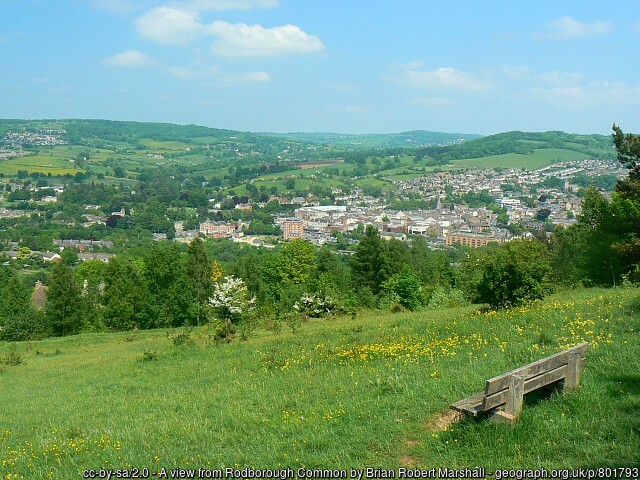
The parish is home to several schools, pubs, a hotel, and a community hall. There is an active Christian community that attends the Church of England parish church or Rodborough Tabernacle United Reformed Church. In addition, there are various clubs and societies such as a football club, scout group, and mother and toddler network.
Selsley
Selsley is a village located two miles south of Stroud. It is situated within the parish of King's Stanley and has houses scattered around the western and eastern edge of a Cotswold spur.
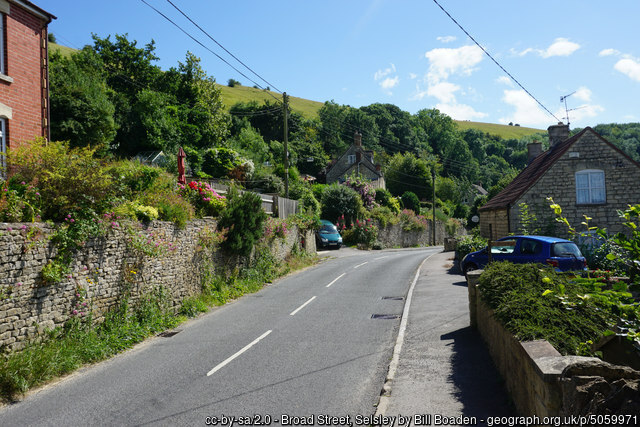
Selsley Common, situated in the Cotswolds with picturesque views of the River Severn and Malvern Hills into Wales, is a designated Site of Special Scientific Interest due to its remarkable wildflower population and variety of invertebrates. In addition to the Bronze Age burial mound, 'the Toots', visitors can enjoy lovely walks along the Cotswold Way.
The five-mile Cotswold Way circular walk is a signed route that covers the common and also takes in sights such as the Stroudwater Canal and Penn Wood.
Sheepscombe
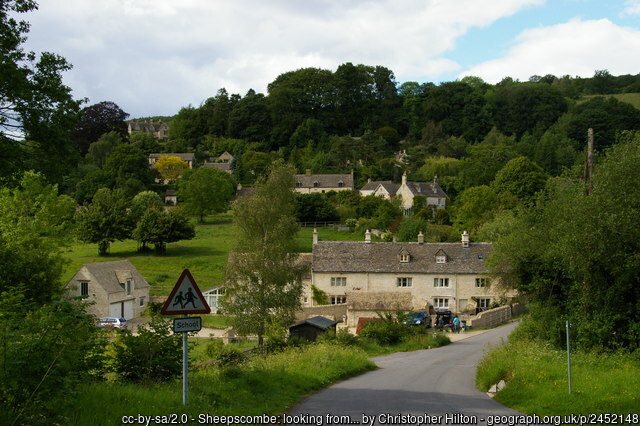
Sheepscombe is located six miles northeast of Stroud and 1.5 miles east of Painswick.
Since the early 17th century, Sheepscombe was been involved in cloth making. It enjoyed its industrial heyday during the late 18th and early 19th centuries, but all of its mills had closed by 1839.
Sheepscombe was once a rural, agricultural village during the early 20th century. However, today it has become a luxurious and expensive place to live - just like many other Cotswold villages.
The village of Sheepscombe is home to many middle-class professionals who are willing to pay extra for the location. However, it can be a difficult place to live if you do not have access to transport as it is situated at the bottom of a steep valley.
Slad
Immortalized by the words of author Laurie Lee, Slad is a hidden gem near the towns of Stroud and Painswick. This green and tranquil valley is best known as the setting for his classic novel ‘Cider with Rosie’, which is loved worldwide.
Many of the locations in Laurie Lee's book are still recognisable today. The tiny village of Slad centres around the Woolpack Inn – where you can see the seat where Lee used to sit - and the church where he is now buried.
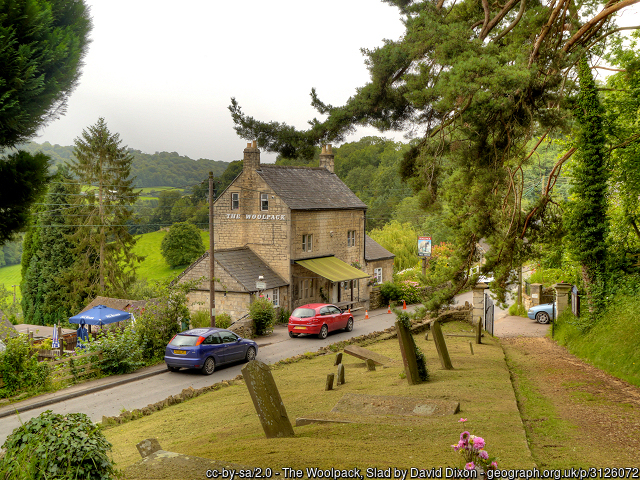
The most recent BBC TV adaptation of ‘Cider with Rosie’ was filmed in Slad Valley and the neighbouring village of Miserden.
If you love nature, there are plenty of options for walks in Slad. The Laurie Lee Wood, recently opened by his widow and daughter, is a perfect example. It's an ancient woodland that exceeds three hectares and looks stunning during bluebell season. Plus, it's right next door to Gloucestershire Wildlife Trusts' Swift’s Hill nature reserve
The Laurie Lee Wildlife Way is a stunning five-mile walking route that features ten poetry posts featuring works by Laurie Lee. These poems provide beautiful descriptions of the surrounding landscape, making it come alive for readers. Although the trail is sometimes steep, it is definitely worth taking the time to navigate the route.
Stonehouse
Stonehouse is a town located approximately nine miles south of Gloucester city centre and four miles west of central Stroud. Stonehouse includes the sub-villages of Bridgend, to the south and Ryeford to the east.
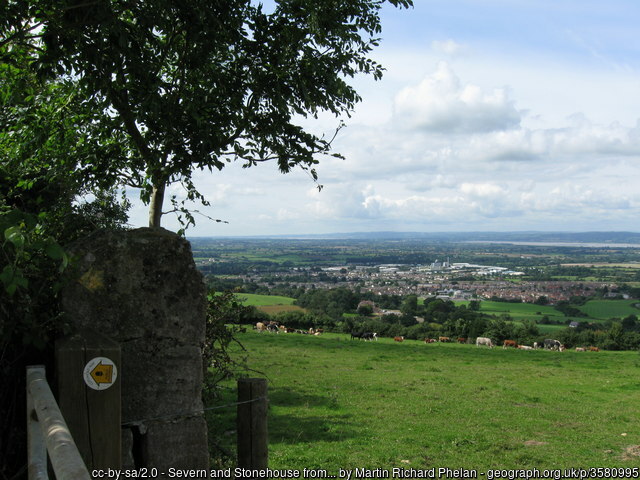
Stonehouse was originally a small agricultural town known for its two water mills and extensive vineyard. However, it has since turned into a thriving industrial hub with numerous businesses, restaurants, and shops. Its direct train connection to London and proximity to the newly restored canal make Stonehouse an attractive option for people looking to move near Stroud.
There are many footpaths and lanes in the town that lead to the Stroudwater Navigation canal. The Cotswold Canals Trust is working hard to restore the canal and there is active progress being made with plans to extend it all the way to Saul Junction where it will meet the Gloucester & Sharpness Canal.
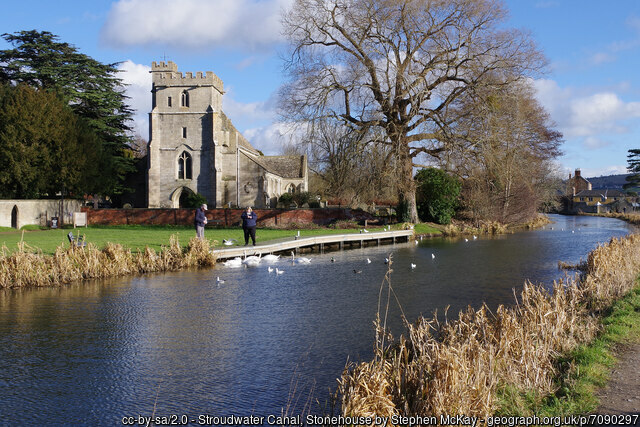
The new railway bridge at 'The Ocean' and the remodelling of the A38 roundabout near Fromebridge Mill were both completed in 2021. When all the planned work is finished, boats will be able to navigate from Saul Junction to the centre of Stroud. Further work is then needed to link this route from Stroud to the River Thames.
Stonehouse has two primary schools: Park Infant School, which hosts pupils from reception to year two, and Park Junior School catering for years three to six. Maidenhill School is the town's comprehensive secondary school for 11-16-year-olds and is located in the northeast of the town.
Wycliffe College, an independent school, is also located in Stonehouse. The college has a preparatory school campus on Ebley Road that includes a nursery school as well as a large senior campus close by.
Woodchester
Woodchester is located almost equidistant between Stroud and Nailsworth. It's about two miles south of Stroud, and a side valley divides the area into North and South Woodchester.
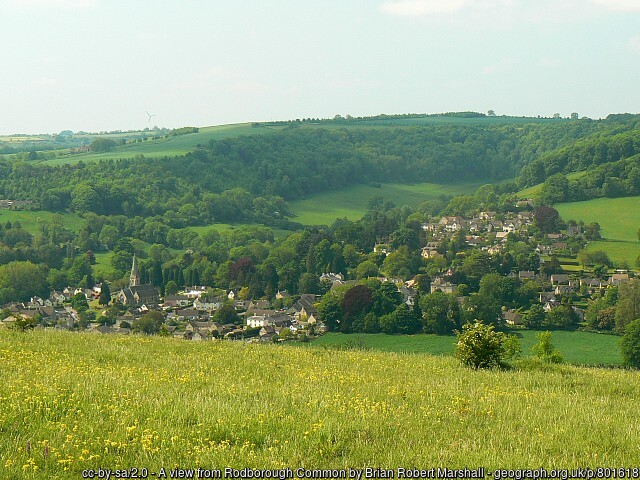
It is home to a Roman Villa, which contains the Orpheus mosaic. The mosaic is one of the largest and most intricate in Europe, dating back to 325 AD.
Woodchester benefits from Woodchester Endowed C of E Primary School as well as a post office and shop in North Woodchester. Both North and South Woodchester have pubs, The Royal Oak in the North and The Ram in the South.
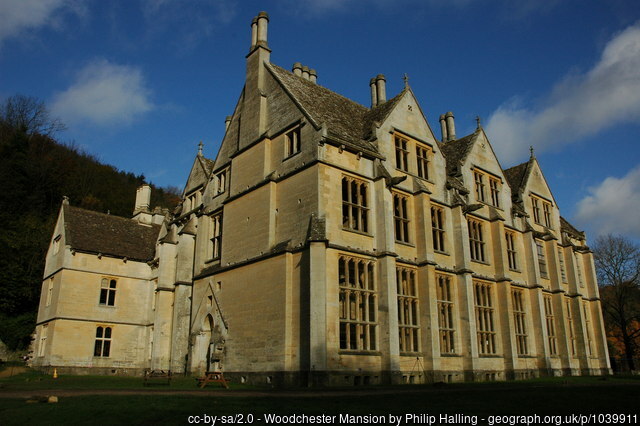
The nearby Woodchester Mansion is regularly open to the public. It stands in a landscaped valley that is now owned by the National Trust which is open daily.
When it comes to property, Stroud has a lot to offer. The Property Centre is a leading local estate agent located in the heart of Stroud.

With experience in selling, buying and renting property throughout the Stroud district, we can provide expert advice as to which areas are best and help you find your ideal home.
Whether you're looking for a house with character in a rural area or a modern apartment close to amenities, we have an extensive selection of properties available so you're sure to find something that meets your needs.
Contact our team today for more information.
